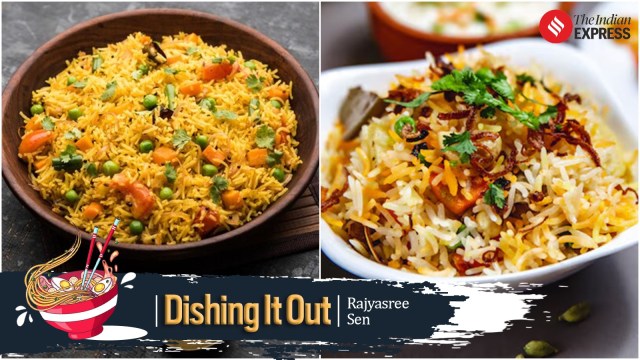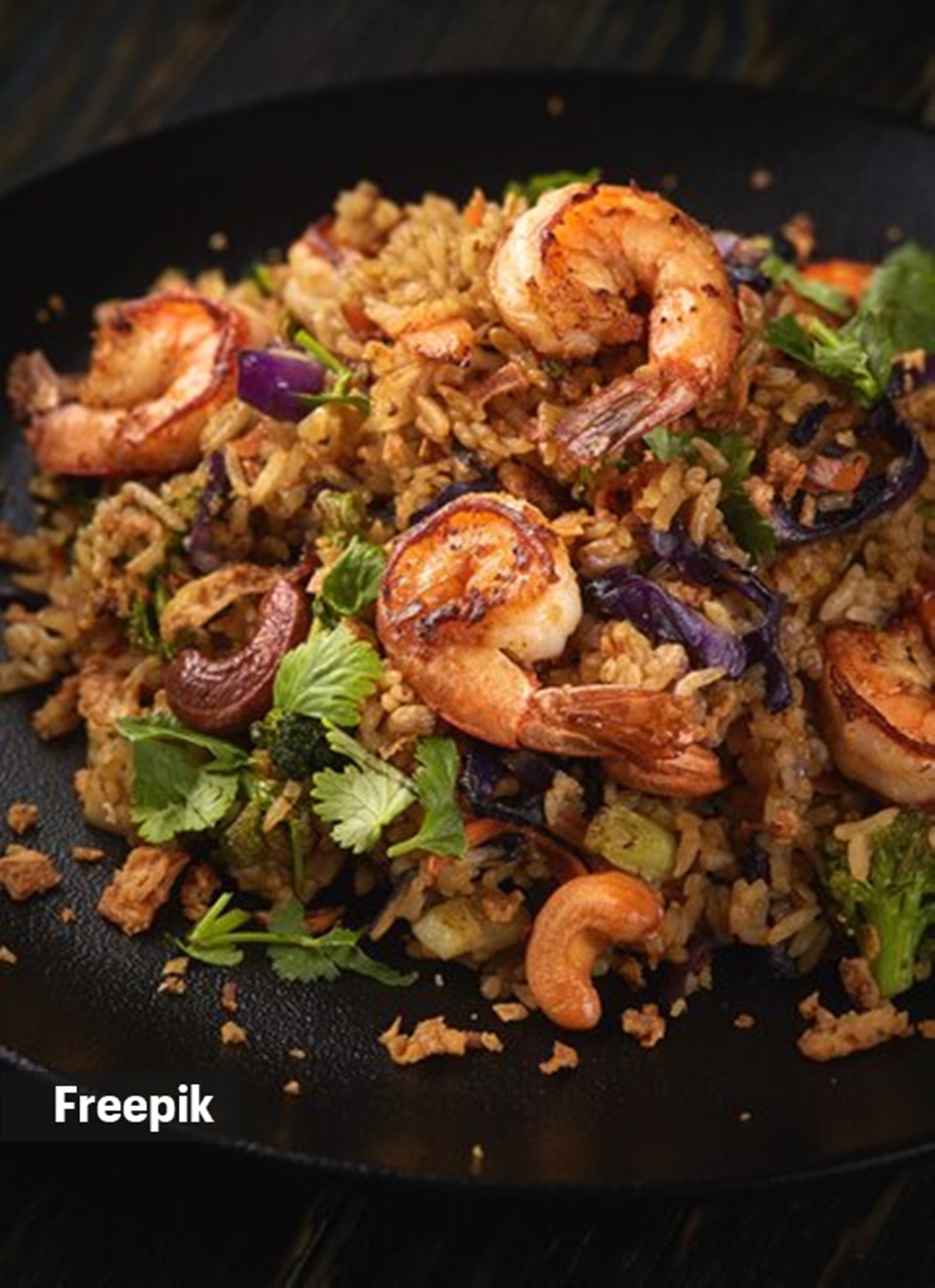📣 For more lifestyle news, click here to join our WhatsApp Channel and also follow us on Instagram
Is vegetable biryani just dolled up pulao? Which came first?
We try to solve the biggest conundrum faced by lovers of the rice preparations which conquered the world.
 The origins of both biryani and pulao are certainly Persian. (Source: Freepik)
The origins of both biryani and pulao are certainly Persian. (Source: Freepik)Every few months, social media erupts in debate over whether vegetable biryani is truly biryani or just pulao. This is followed by discussions on whether pulao qualifies as biryani and vice versa. Given the deliciousness of both dishes, people, understandably, feel passionately about the distinction, with vegetarians particularly slighted when their pulao isn’t called biryani. Sure, this may seem like a First World problem, but for those who cook or eat these dishes, it’s critical.
My aim is not to assert that the best biryani is the Calcutta biryani, with its lightly flavored long-grained rice layered with cooked spiced meat or chicken, a potato cooked in meat stock, and a hard-boiled egg. Why waste word count on stating facts, right? Instead, I aim to distinguish between pulao and biryani and address whether “vegetable biryani” is a misnomer.
According to an article by Chef Kunal Kapur in this publication, “One common notion is that pulao or pulav is an Indian dish”; however, chef Kapur pointed out that it was first made in Central Asia, specifically modern-day Baghdad. “That too with meat,” he said.
Historian Lizzie Collingham, in her book Curry: A Tale of Cooks and Conquerors, states that modern biryani was developed in the Mughal Empire’s royal kitchens, blending “India’s native spicy dishes with Persian pilaf (pulao)”.
The origins of both biryani and pulao are certainly Persian. “Biryani” derives from the Persian word “virinji” or “birinj.” The cooking method “dum pukht,” meaning “air-cooled” in Persian, involves sealing food or rice in dough. The word “palao,” found in many languages, stems from Persian and Arabic origins and originally referred to spiced meat and ghee cooked with rice. This term appears in the Yagnavalkya Smriti from the first century AD as “palao-mevach”.
The term “biryani” dates back to the 13th century, referring to a spicy meat and rice dish. However, in India, “pulao” is the older term. To be fair, the Ain-i-Akbari shows minimal differences between biryani and pulao recipes.
In fact, in the Ain-i-Akbari, three classes of cooked dishes are described. The first, called safiyana, were made on days when Akbar abstained from meat. The second, relevant to us, included dishes where meat and rice were cooked together, such as palao, biryani, and shulla––a combination of rice, dal, and meat––as well as shorba (meat and wheat), like harissa or haleem.
The primary difference between pulao and biryani lies in their cooking methods. Biryani is never cooked in stock; it involves partially or fully cooking the rice, draining it, and layering it with cooked meat (rarely vegetables) before sealing the vessel and cooking it on “dum.” This creates distinct layers of rice and meat that are mixed before serving.
In contrast, pulao (or pilaf) involves cooking raw rice in liquid stock with spices and meat, chicken, or vegetables, with the liquid fully absorbed by the rice. Therefore, vegetable “biryanis” are actually always pulaos, as they are neither layered nor have separately cooked components.
But, if we are speaking of the OG pulao, culinary historian KT Achaya notes that the Ain-i-Akbari has a recipe for pallao using 10 seers (about a kilo each) of minced meat or keema with rice, four seers of ghee, two seers of gram, two seers of onions, and ginger, pepper, cumin, cardamom, and cloves. Goats, chicken, and sheep were usually used. In the 13th century, a chicken pallao was mentioned in the Sultanate court in Delhi. The very popular Navratan pulao, with saffron, raisins, paneer, and nuts, was created to honour the nine intellectual gems of Akbar’s court. Historically, these dishes used meat stock. It is only today that we refer to rice cooked with vegetables as pulao.
I will discuss my favourite biryanis in a separate article, as almost every region of India has its own version. Here, I include a favorite prawn and peas pulao recipe, which I love. If you’re not a fan of seafood, you can replace the prawn with chicken, though the taste will change considerably.
 Try this prawns and pea pulao recipe (Source: Freepik)
Try this prawns and pea pulao recipe (Source: Freepik)
Prawns and peas pulao
Ingredients
1 kg prawns (shelled and deveined)
½ kg/ 2 cups rice ( I use kolam which is a short-grained rice, but you can use Basmati as well)
4 onions (sliced)
3 tomatoes (chopped)
3 potatoes (diced and fried lightly)
1 cup peas
8 dry red chillies
10 cloves garlic
1 ½ tablespoons cumin seeds
½ teaspoon turmeric powder
3 cups coconut milk (use tetra pack/canned coconut milk)
5 pieces each of cloves,2- cinnamon, 3-green cardamom
8 Peppercorns
Few curry leaves
Oil
1 cup hot water
Method:
Wet grind the red chillies, garlic and cumin seeds into a smooth paste. Wash and soak the rice in water for 30 minutes. In a wide-bottomed pot, add four or five serving teaspoons of oil or ghee and toss in the onions, whole spices and curry leaves. Sauté until the onions turn translucent. Add the tomatoes, mix well and cook for a few minutes on a high flame.
Now add in the chilli paste, turmeric and salt and stir well. if the masala sticks to the bottom (of the pan), add some water. Add the prawns and potatoes, and mix well, and then add the coconut milk along with some water and the peas, and bring to a boil. Add the rice, stir and cook until all the liquid has been soaked up.
📣 For more lifestyle news, click here to join our WhatsApp Channel and also follow us on Instagram






- 01
- 02
- 03
- 04
- 05






















